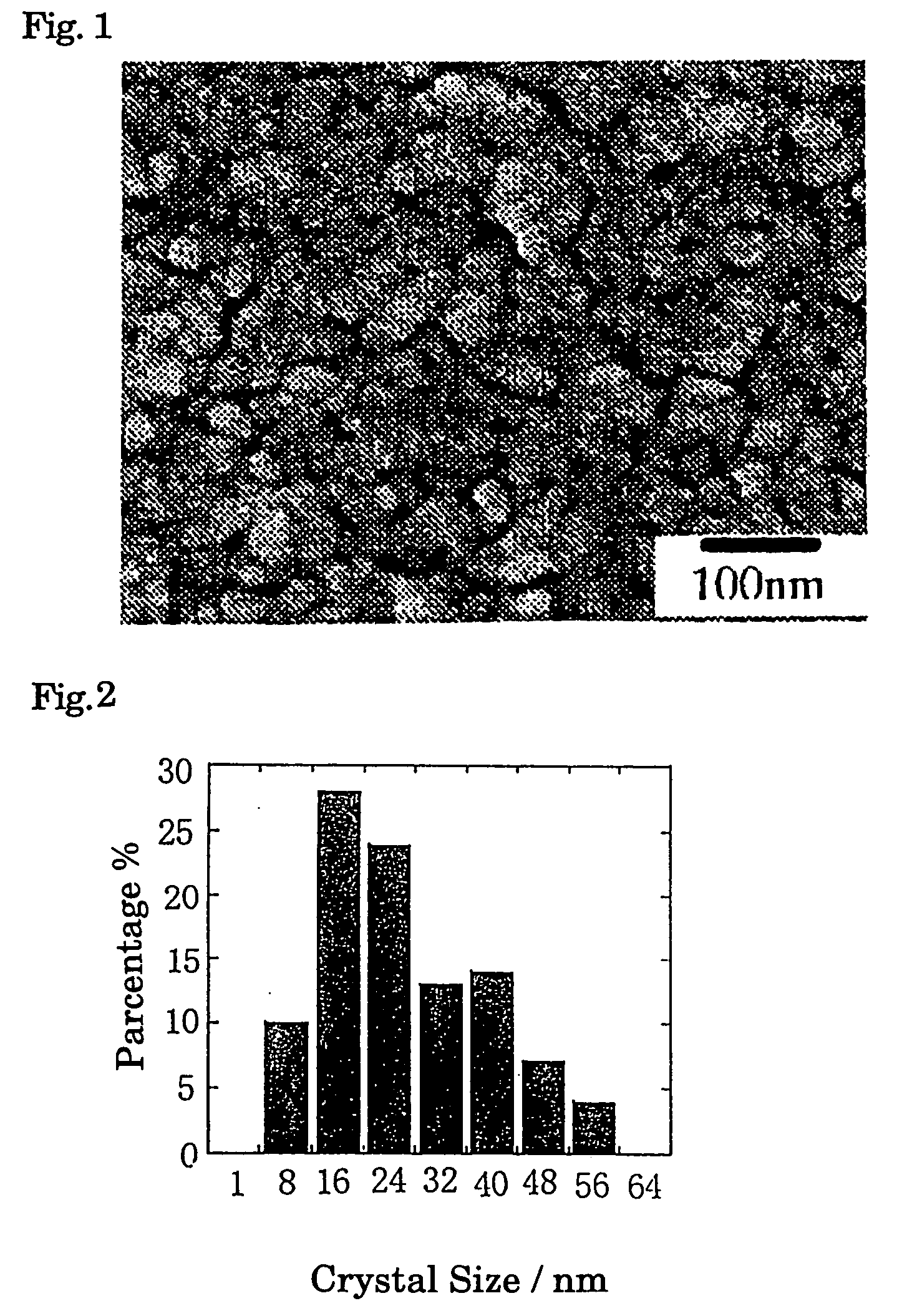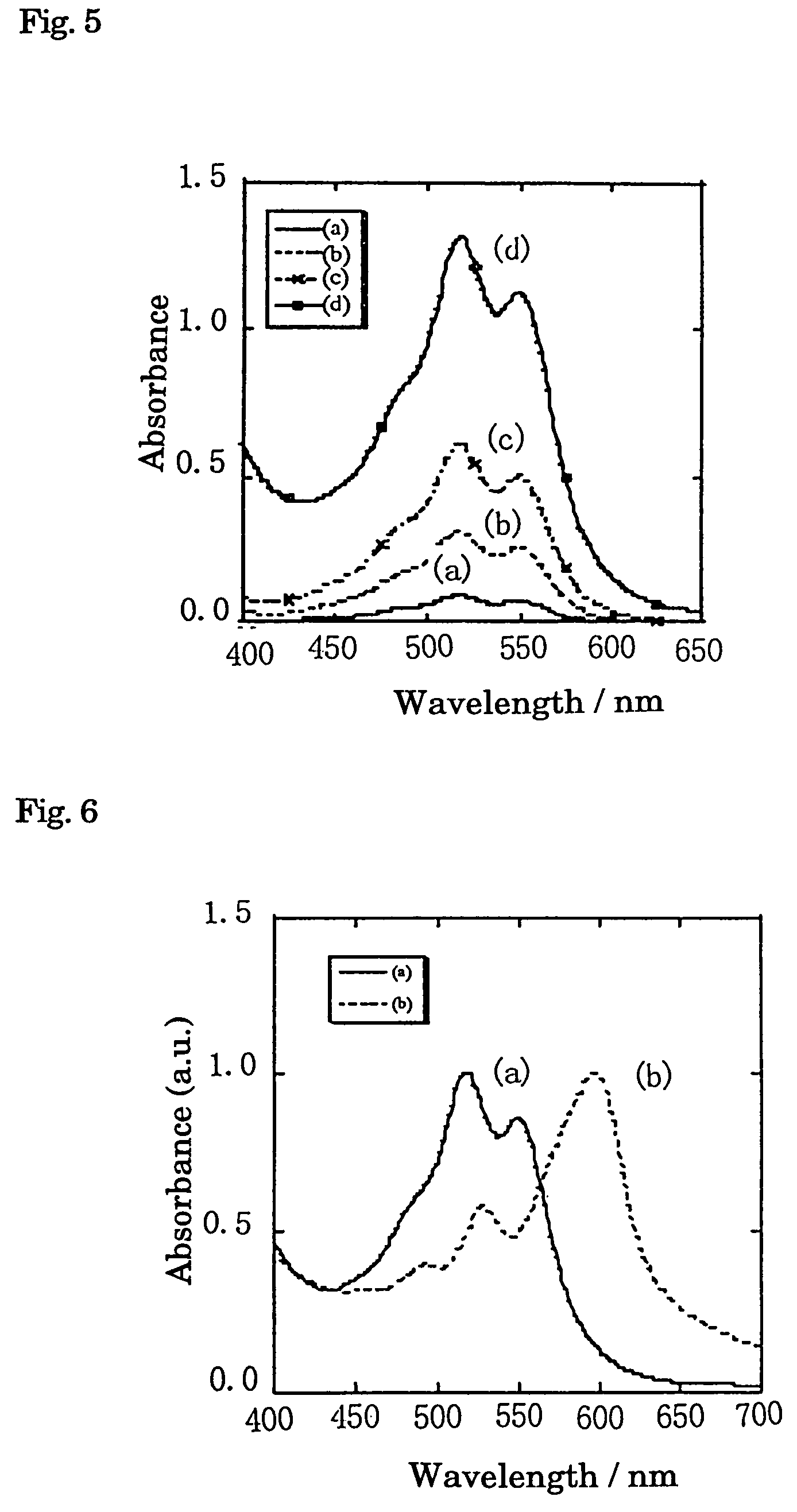Process for producing pigment nanoparticle
a nanoparticle and nanoparticle technology, applied in the direction of supercritical condition process, chemical production, separation process, etc., can solve the problems of unsatisfactory organic pigment preparation method, unsatisfactory energy consumption and environmental suitability, and unsatisfactory pigments. , to achieve the effect of poor solvent for pigmen
- Summary
- Abstract
- Description
- Claims
- Application Information
AI Technical Summary
Benefits of technology
Problems solved by technology
Method used
Image
Examples
example 1
[0038]1, 3, 5 and 10 mM of non substituted and chained quinacridone pigment are respectively dissolved in 200 μL of 1-methyl-2-pyrrolidinone [common name: N-methylpyrrolidinone (NMP)] at room temperature and obtained uniform solution. Said prepared solutions are poured into 10 mL of water which is vigorously stirred by 1500 rpm. SEM photographs of the obtained fine particles of quinacridone pigment is took, and the image is visually observed and the size of formed particles of quinacridone pigment is measured and distribution of average particle size is determined. SEM image is shown in FIG. 1, distribution of particles size is shown in FIG. 2. Average crystal size of the quinacridone pigment calculated from said measurement is 20 nm.
[0039]Powder X ray diffraction pattern of the obtained nano quinacridone crystal is shown in FIG. 3.
[0040]In FIG. 3, since 2 θ takes three peaks at 6.099, 13.816 and 26.153, this crystal is considered as γ type. Absorption spectrum of water dispersion l...
example 2
[0042]Quinacridone pigment solution is prepared by same method as Example 1. 200 μL of uniform solution whose concentration of organic pigment is 5 mM is prepared. The prepared solution is poured into 10 mL of methanol vigorously stirred by a stirrer at 1500 rpm stirring speed. The size of the obtained fine particle of quinacridone pigment is measured by same method as Example 1, and average particle size and distribution curve of the obtained fine particle of quinacridone pigment are calculated.
[0043]Powder X ray diffraction pattern of the obtained nano quinacridone crystal is shown in FIG. 4. Since the pattern has peaks at 26.870 of 2 θ, said nano crystal of quinacridone can be confirmed as α type. By changing the kind of poor solvent, the kind of crystal form of the obtained quinacridone nano crystal can be controlled.
[0044]FIG. 6(b) shows the absorption spectrum of dispersion of quinacridone crystal prepared using methanol as a poor solvent and absorption peak position is beyond...
example 3
[0045]5 mL of titanyl phthalocyanine pigment solution with 1 mM is prepared according to the method of the mentioned Examples, by exchanging the pigment for titanyl phthalocyanine and using 1:1 mixed solution of NMP-pyridine as a solvent. Said solution is poured into 20 ml of mixed poor solution of water and t-butanol, which is stirred vigorously at the speed of 1500 rpm for one hour at room temperature. SEM image of the obtained nano crystal of titanyl phthalocyanine pigment is prepared by the same as above mentioned Examples. Similarly to Example 1, SEM image of the obtained fine particles is visually observed and the size of formed particles of the obtained nano crystal of titanyl phthalocyanine pigment is measured and distribution of average particle size is evaluated. SEM is shown in FIG. 1, distribution of particle size is shown in FIG. 7 and average size of crystal is 30 nm.
[0046]Powder X ray diffraction pattern of the obtained phthalocyanine nano crystal is shown in FIG. 9. ...
PUM
| Property | Measurement | Unit |
|---|---|---|
| particle size | aaaaa | aaaaa |
| size | aaaaa | aaaaa |
| cut off wave length | aaaaa | aaaaa |
Abstract
Description
Claims
Application Information
 Login to View More
Login to View More - R&D
- Intellectual Property
- Life Sciences
- Materials
- Tech Scout
- Unparalleled Data Quality
- Higher Quality Content
- 60% Fewer Hallucinations
Browse by: Latest US Patents, China's latest patents, Technical Efficacy Thesaurus, Application Domain, Technology Topic, Popular Technical Reports.
© 2025 PatSnap. All rights reserved.Legal|Privacy policy|Modern Slavery Act Transparency Statement|Sitemap|About US| Contact US: help@patsnap.com



